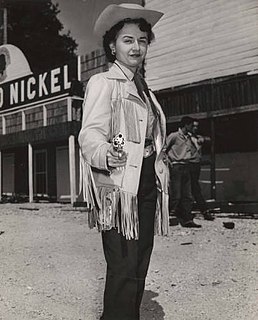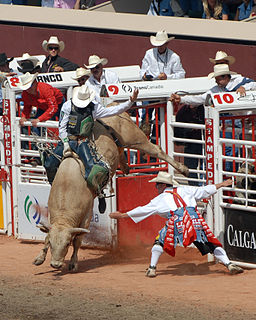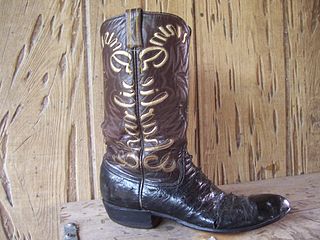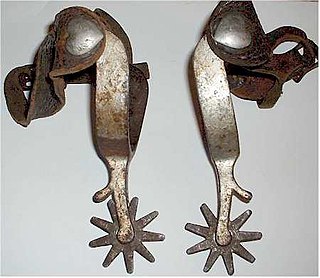 W
WWestern wear is a category of men's and women's clothing which derives its unique style from the clothes worn in the 19th century Wild West. It ranges from accurate historical reproductions of American frontier clothing, to the stylized garments popularized by Western film and television or singing cowboys such as Gene Autry and Roy Rogers in the 1940s and 1950s. It continues to be a fashion choice in the West and Southwestern United States, as well as people associated with country music or Western lifestyles, such as Western or various Regional Mexican music styles. Western wear typically incorporates any of the following, Western shirts with pearl snap fasteners and vaquero design accents, blue jeans, cowboy hat, a leather belt, and cowboy boots.
 W
WA kerchief, also known as a bandana or bandanna, is a triangular or square piece of cloth tied around the head, face or neck for protective or decorative purposes. The popularity of head kerchiefs may vary by culture or religion, and may vary among Orthodox Jewish and Christian, Catholic, Amish, and Muslim people.
 W
WThe Boss of the Plains was a lightweight all-weather hat designed in 1865 by John B. Stetson for the demands of the American West. It was intended to be durable, waterproof and elegant. This design and the term "Stetson" eventually became all-but-interchangeable with what later became known as the cowboy hat.
 W
WBuckskins are clothing, usually consisting of a jacket and leggings, made from buckskin, a soft sueded leather from the hide of deer. Buckskins are often trimmed with a fringe – originally a functional detail, to allow the garment to shed rain, and to dry faster when wet because the fringe acted as a series of wicks to disperse the water – or quills. They also served as a form of camouflage when hunting, by breaking up the outline of the wearer and allowing them to blend in with their background.
 W
WA buffalo coat is a heavy winter garment made from the bison, which also commonly known as the "buffalo". In North America they descended from the simpler, sleeveless buffalo robes worn by the Indigenous peoples of North America prior to their partial replacement by capotes made of point blankets during the North American fur trade. Similar garments were also used across Eurasia prior to the gradual displacement and near-extinction of the European bison or wisent. Commercially produced coats with sleeves and buttons became popular with non-indigenous people during the early settlement period of the American West and the Canadian prairies. Their use mostly ended because of a rising conservationist movement intended to preserve the bison, which had been hunted to near-extinction in North America as well.
 W
WThe Calgary White Hat is a white felt cowboy hat which is the symbol of both the Calgary Stampede annual rodeo and the city of Calgary. Created by Morris Shumiatcher, owner of Smithbilt Hat Company, it was worn for the first time at the 1946 Stampede. In the early 1950s, Mayor of Calgary Donald Hugh Mackay began presenting the white hat to visiting dignitaries, a tradition that the mayor's office continues to this day. Thousands of tourists and groups also participate in "white hatting ceremonies" conducted by Tourism Calgary and by volunteer greeters at the Calgary International Airport. In 1983, the Calgary White Hat was incorporated into the design of the flag of Calgary.
 W
WA campaign hat, sometimes called campaign cover, is a broad-brimmed felt or straw hat, with a high crown, pinched symmetrically at the four corners.
 W
WChaps are sturdy coverings for the legs consisting of leggings and a belt. They are buckled on over trousers with the chaps' integrated belt, but unlike trousers they have no seat and are not joined at the crotch. They are designed to provide protection for the legs and are usually made of leather or a leather-like material. Their name is a shortened version of the Spanish word chaparreras. Chaparreras were named after the chaparral from which they were designed to protect the legs while riding on horseback. Like much of western horse culture, the origin of chaparreras was in the part of New Spain that later became Mexico, and has been assimilated into cowboy culture of the American west. They are a protective garment to be used when riding a horse through brushy terrain. In the modern world, they are worn for both practical work purposes and for exhibition or show use. Chaps have also been adopted for use on motorcycles, particularly by cruiser-style motorcycle riders.
 W
WA coonskin cap is a hat fashioned from the skin and fur of a raccoon. The original coonskin cap consisted of the entire skin of the raccoon including its head and tail. Beginning as traditional Native American headgear, coonskin caps became associated with American and Canadian frontiersmen of the 18th and 19th centuries, and were highly popular among boys in the United States, Canada, the United Kingdom and Australia in the 1950s.
 W
WCowboy boots refer to a specific style of riding boot, historically worn by cowboys. They have a high heel that is traditionally made of stacked leather, rounded to pointed toe, high shaft, and, traditionally, no lacing. Cowboy boots are normally made from cowhide leather, which may be decoratively hand tooled, but are also sometimes made from "exotic" skins like alligator, snake, ostrich, lizard, eel, elephant, stingray, elk, buffalo, and so on.
 W
WThe cowboy hat is a high-crowned, wide-brimmed hat best known as the defining piece of attire for the North American cowboy. Today it is worn by many people, and is particularly associated with ranch workers in the western and southern United States, western Canada and northern Mexico, with many country, regional Mexican and sertanejo music performers, and with participants in the North American rodeo circuit. It is recognized around the world as part of Old West apparel.
 W
WA duster is a light, loose-fitting long coat. The original dusters were full-length, light-colored canvas or linen coats worn by horsemen to protect their clothing from trail dust. These dusters were typically slit up the back to hip level for ease of wear on horseback. Dusters intended for riding may have features such as a buttonable rear slit and leg straps to hold the flaps in place. For better protection against rain, dusters were made from oilcloth and later from waxed cotton. Dusters were the recommended "uniform" for Texas Rangers.
 W
WFringe is an ornamental textile trim applied to an edge of a textile item, such as drapery, a flag, or epaulettes.
 W
WA Hudson's Bay point blanket is a type of wool blanket traded by the Hudson's Bay Company (HBC) in British North America and the United States during the 1700s and 1800s. The company is named for the Hudson Bay and the blankets were typically traded to First Nations in exchange for beaver pelts. The blankets continue to be sold by Canada's Hudson's Bay stores and have come to hold iconic status in Canada. In the United States they can be found at luxury department store and Hudson's Bay sister chain Lord & Taylor.
 W
WJeans are a type of pants or trousers, typically made from denim or dungaree cloth. Often the term "jeans" refers to a particular style of trousers, called "blue jeans", which were invented by Jacob W. Davis in partnership with Levi Strauss & Co. in 1871 and patented by Jacob W. Davis and Levi Strauss on May 20, 1873. Prior to the Levi Strauss patented trousers, the term "blue jeans" had been long in use for various garments, constructed from blue-colored denim.
 W
WA petticoat or underskirt is an article of clothing, a type of undergarment worn under a skirt or a dress. Its precise meaning varies over centuries and between countries.
 W
WA poncho is an outer garment designed to keep the body warm. A rain poncho is made from a watertight material designed to keep the body dry from the rain. Ponchos have been used by the Native American peoples of the Andes since pre-Hispanic time, from places now under the territory of Ecuador, Colombia, Bolivia, Argentina, Chile and Peru and are now considered typical South American garments.
 W
WA prairie skirt is an American style of skirt, an article of women's and girls' clothing.
 W
WA slouch hat is a wide-brimmed felt or cloth hat most commonly worn as part of a military uniform, often, although not always, with a chinstrap. It has been worn by military personnel from many different nations including Australia, Ireland, United Kingdom, India, New Zealand, Southern Rhodesia, France, the United States, the Confederate States, Germany and many others. Australia and New Zealand have had various models of slouch hat as standard issue headwear since the late Victorian period.
 W
WA snap fastener is a pair of interlocking discs, made out of a metal or plastic, commonly used in place of traditional buttons to fasten clothing and for similar purposes. A circular lip under one disc fits into a groove on the top of the other, holding them fast until a certain amount of force is applied. Different types of snaps can be attached to fabric or leather by riveting with a punch and die set specific to the type of rivet snaps used, sewing, or plying with special snap pliers.
 W
WA spur is a metal tool designed to be worn in pairs on the heels of riding boots for the purpose of directing a horse or other animal to move forward or laterally while riding. It is usually used to refine the riding aids (commands) and to back up the natural aids. The spur is used in many equestrian disciplines. Most equestrian organizations have rules in about spur design and use and penalties for using spurs in any manner that constitutes animal abuse.
 W
WStetson is a brand of hat manufactured by the John B. Stetson Company.
 W
WJohn Batterson Stetson was an American hatter, hat manufacturer, and, in the 1860s, the inventor of the cowboy hat. He founded the John B. Stetson Company as a manufacturer of headwear; the company's hats are now commonly referred to simply as Stetsons.
 W
WA T-shirt, or tee shirt, is a style of fabric shirt named after the T shape of its body and sleeves. Traditionally, it has short sleeves and a round neckline, known as a crew neck, which lacks a collar. T-shirts are generally made of a stretchy, light and inexpensive fabric and are easy to clean. The T-shirt evolved from undergarments used in the 19th century and, in the mid-20th century, transitioned from undergarment to general-use casual clothing.
 W
WWestern lifestyle or cowboy culture is the lifestyle, or behaviorisms, of, and resulting from the influence of, the attitudes, ethics and history of the American Western cowboy and cowgirl. In the present day these influences affect this sector of the population's choice of recreation, clothing, and consumption of goods. Today, the Western lifestyle is considered a subculture and includes strong influences from Native American and Mexican American culture.